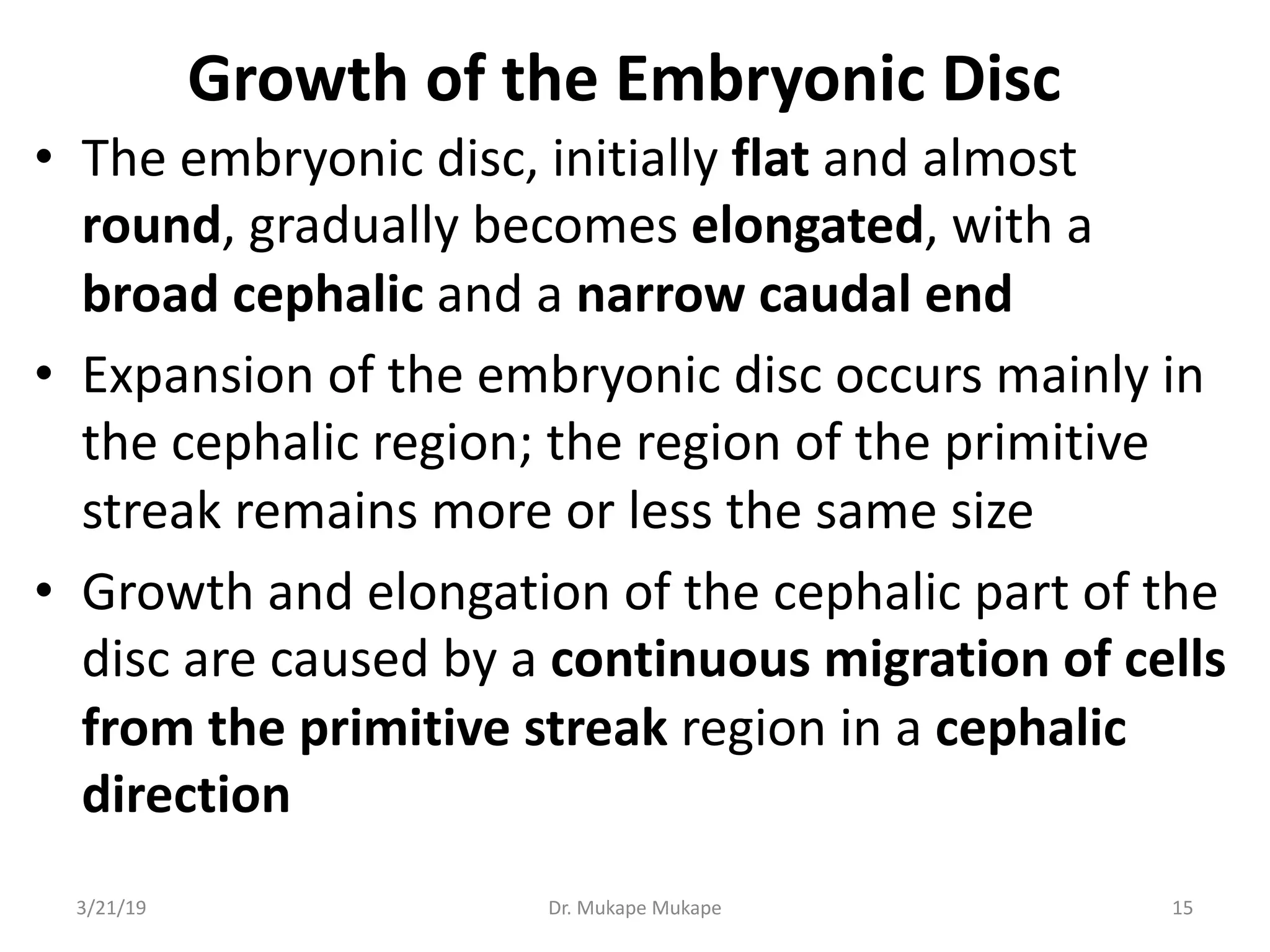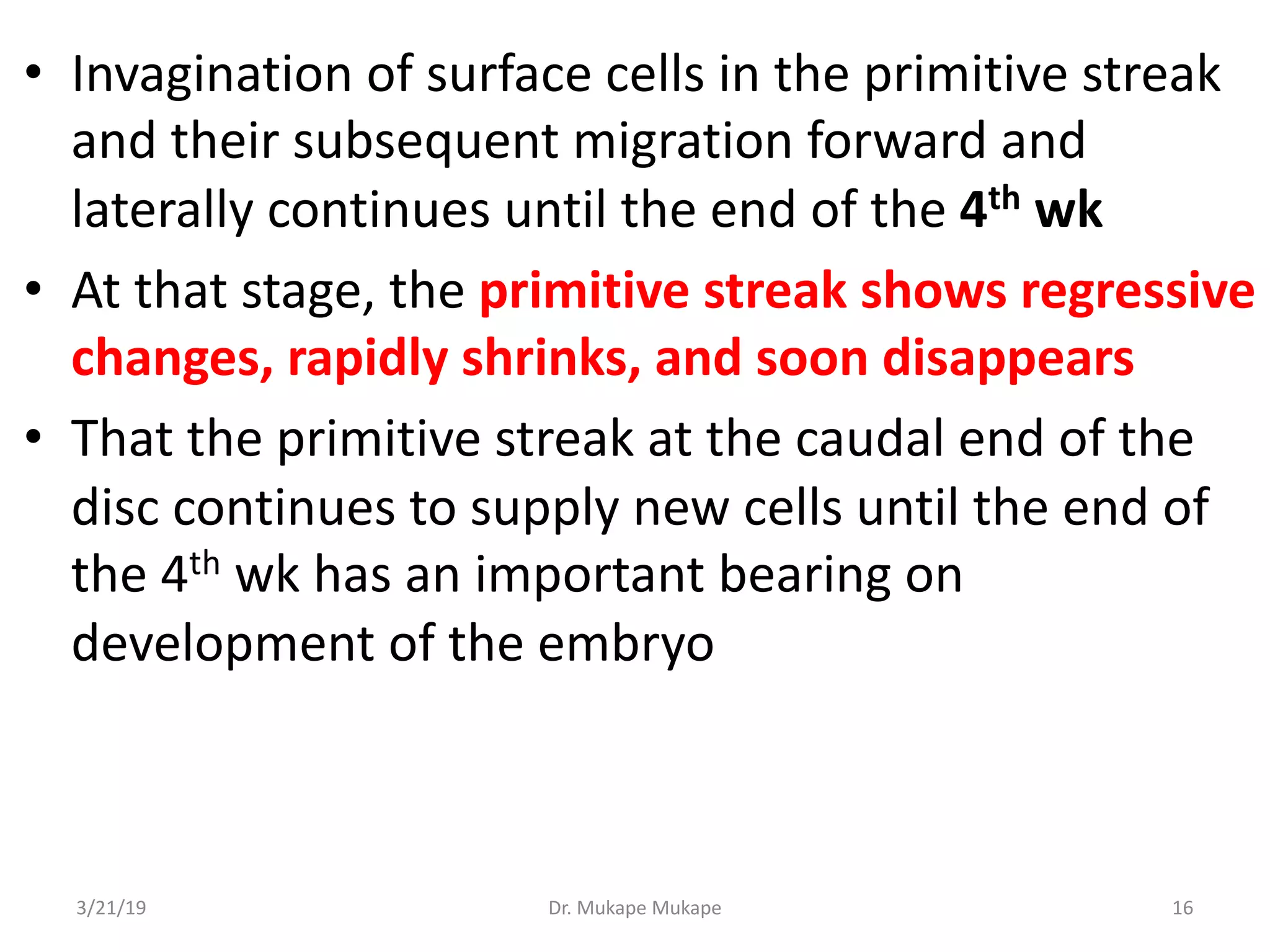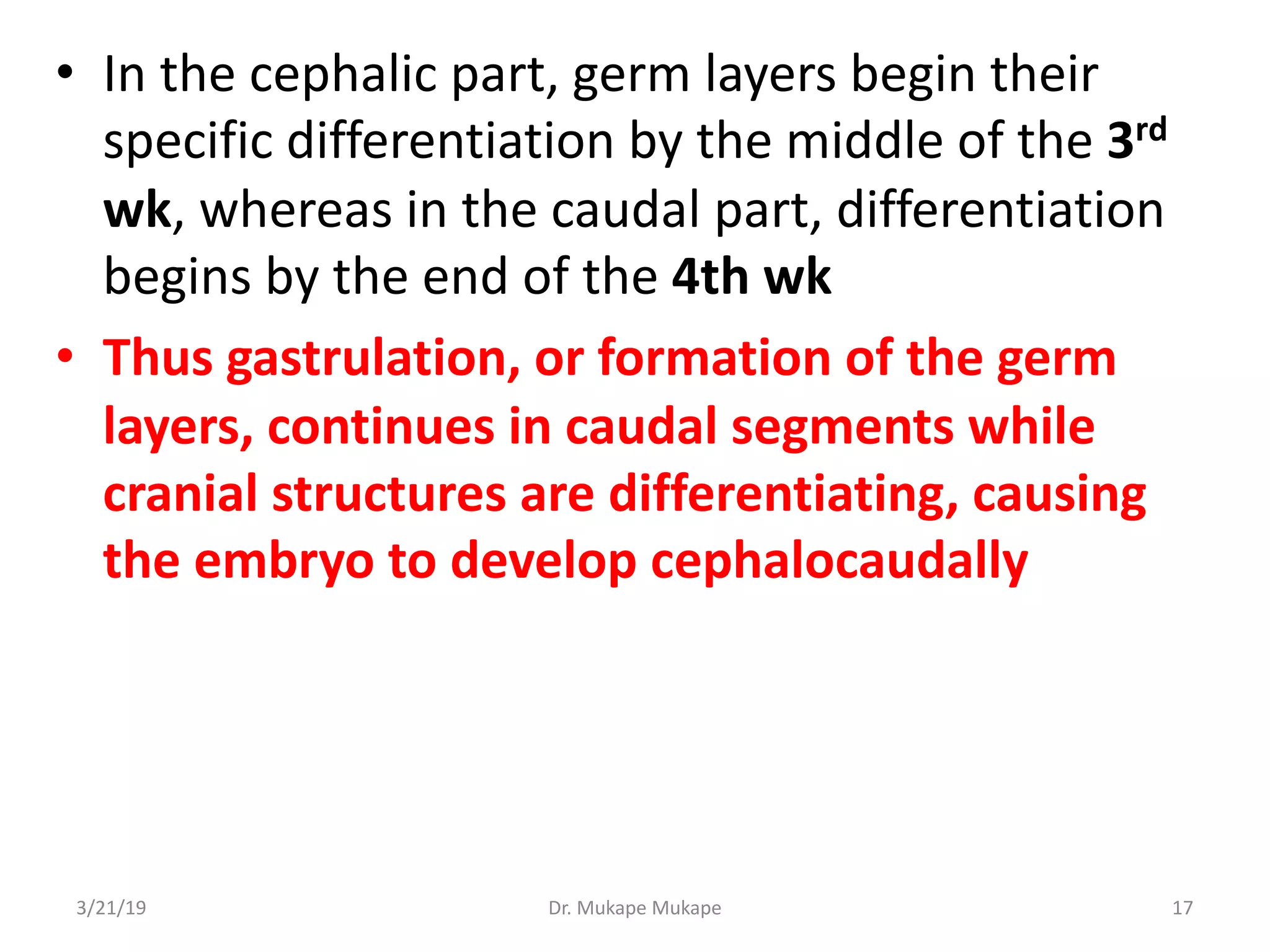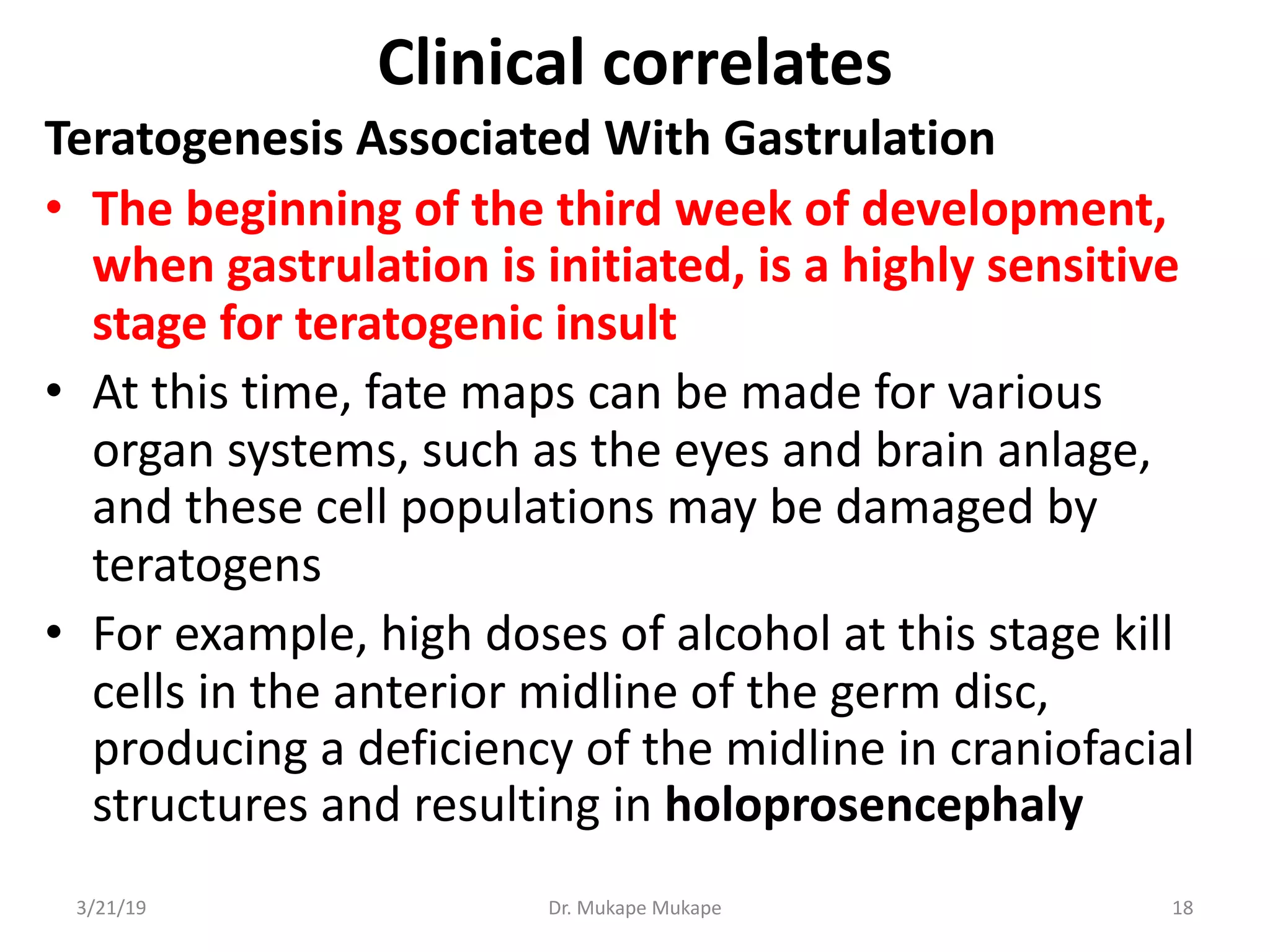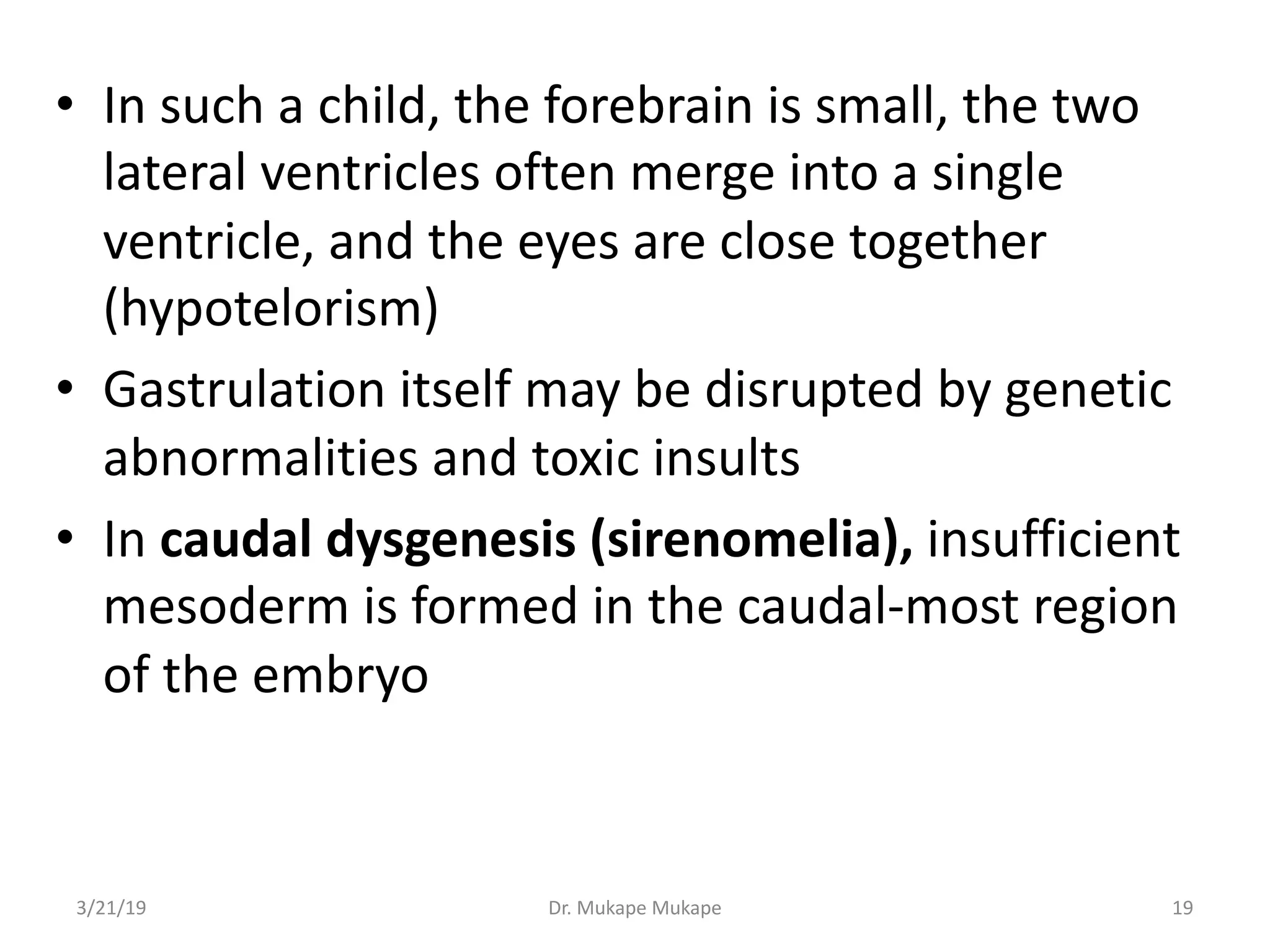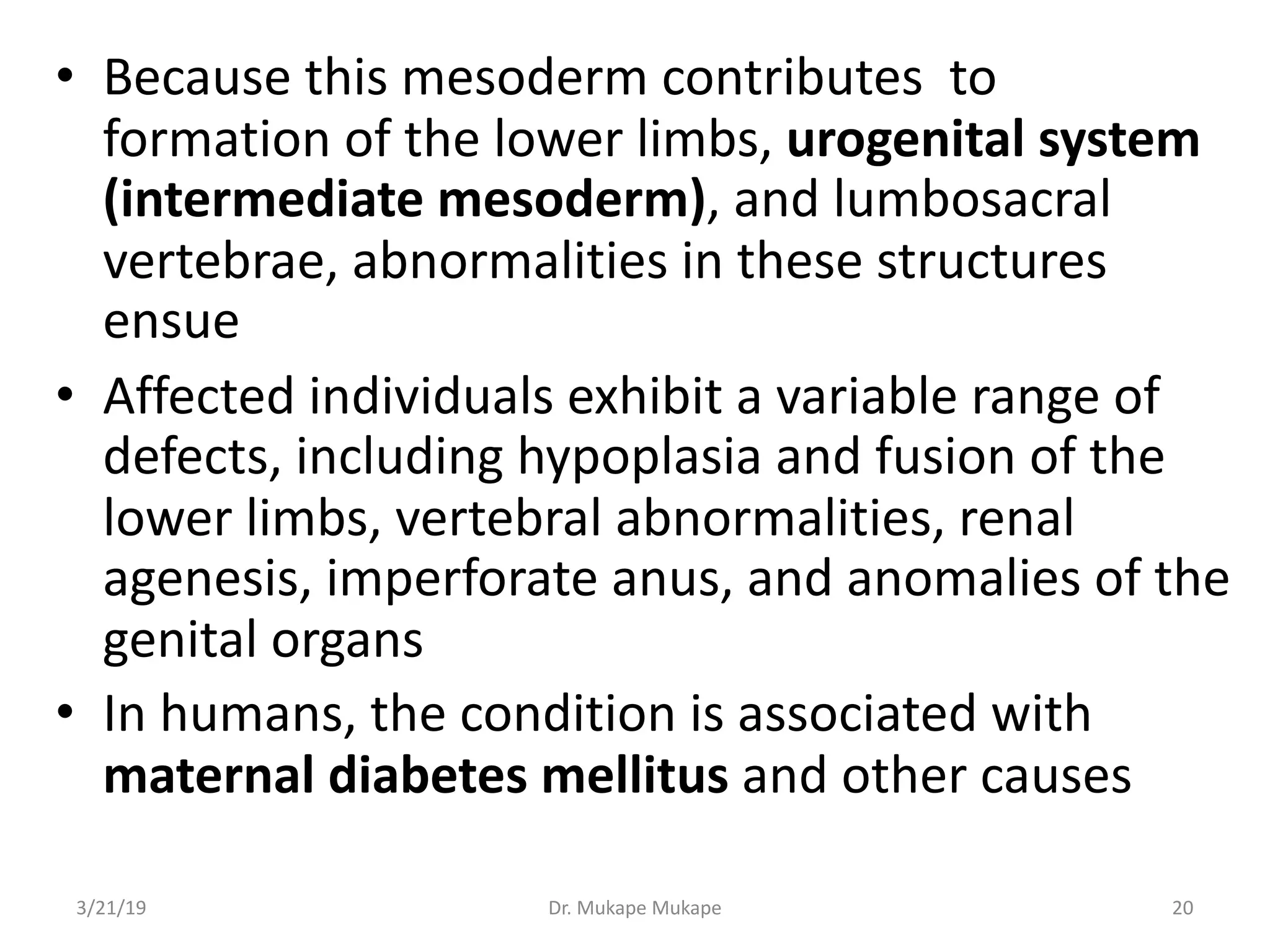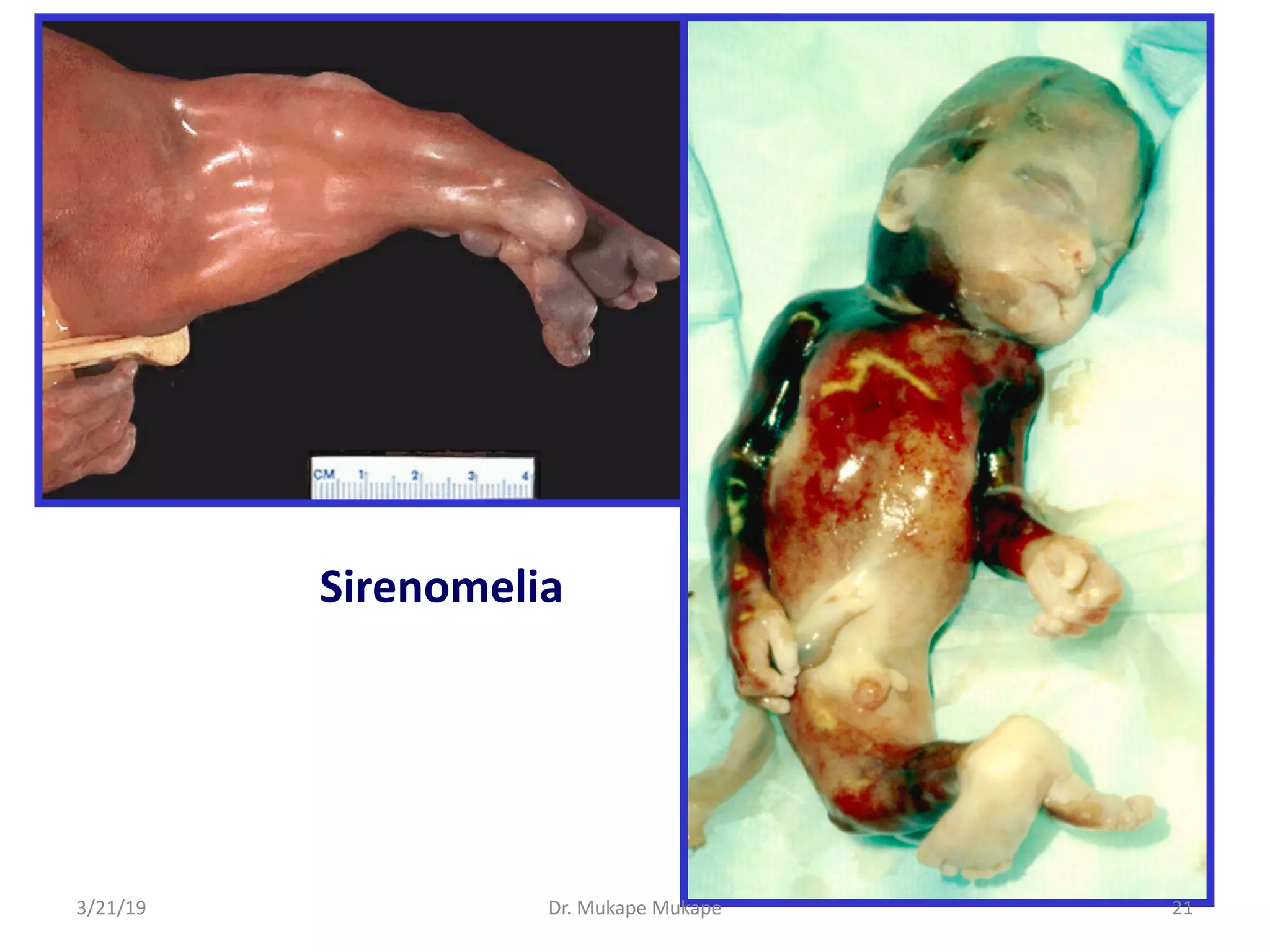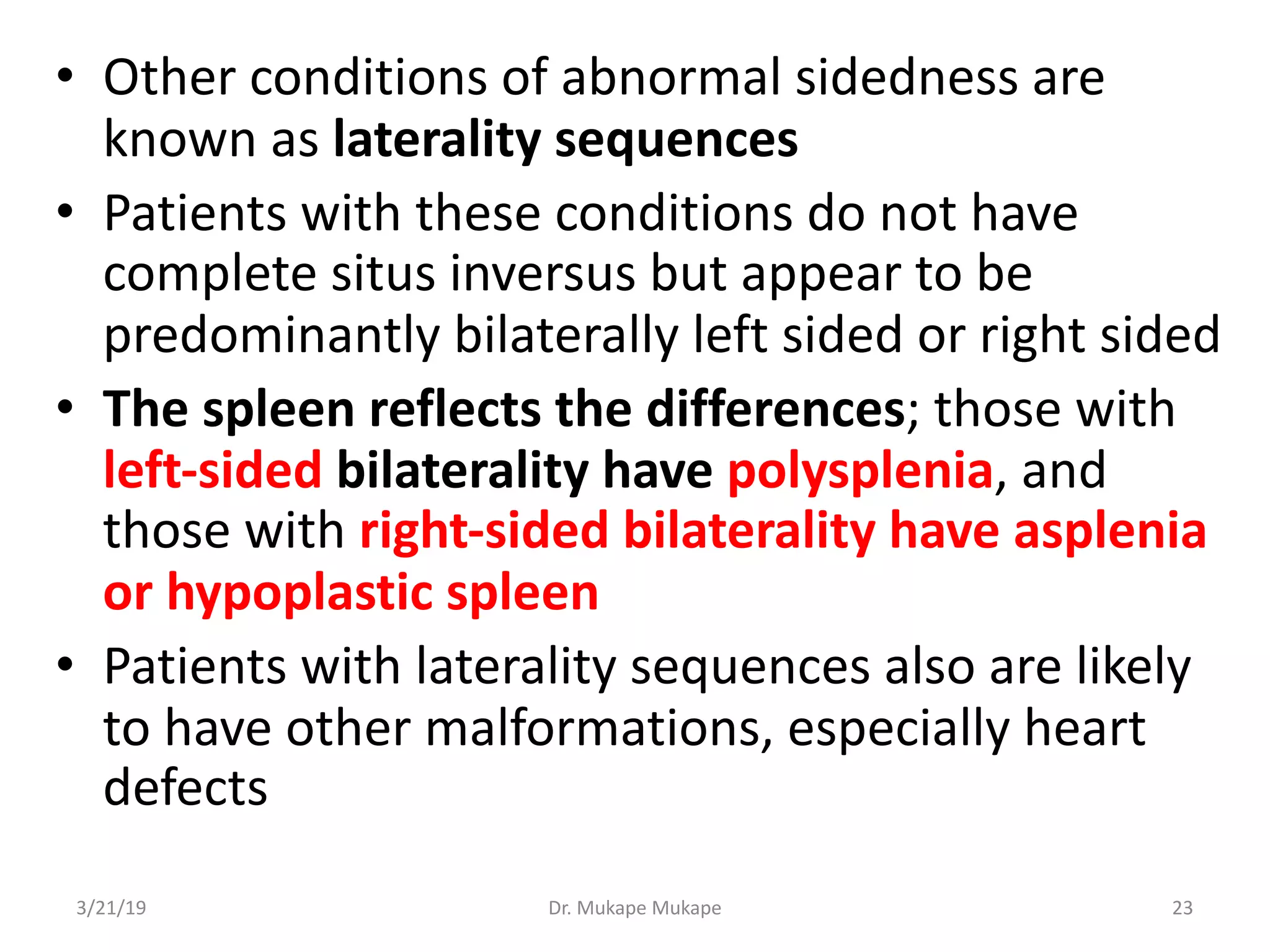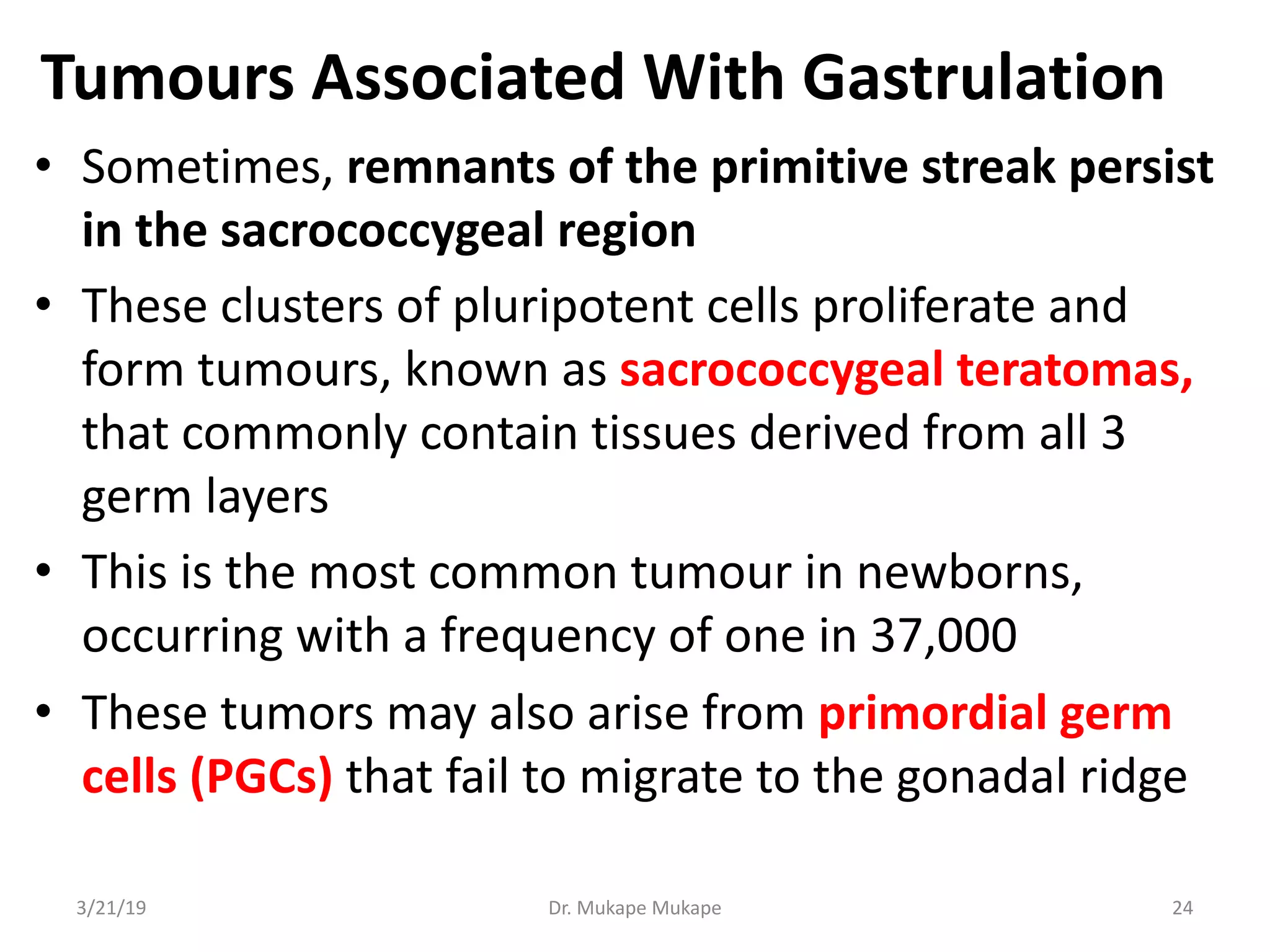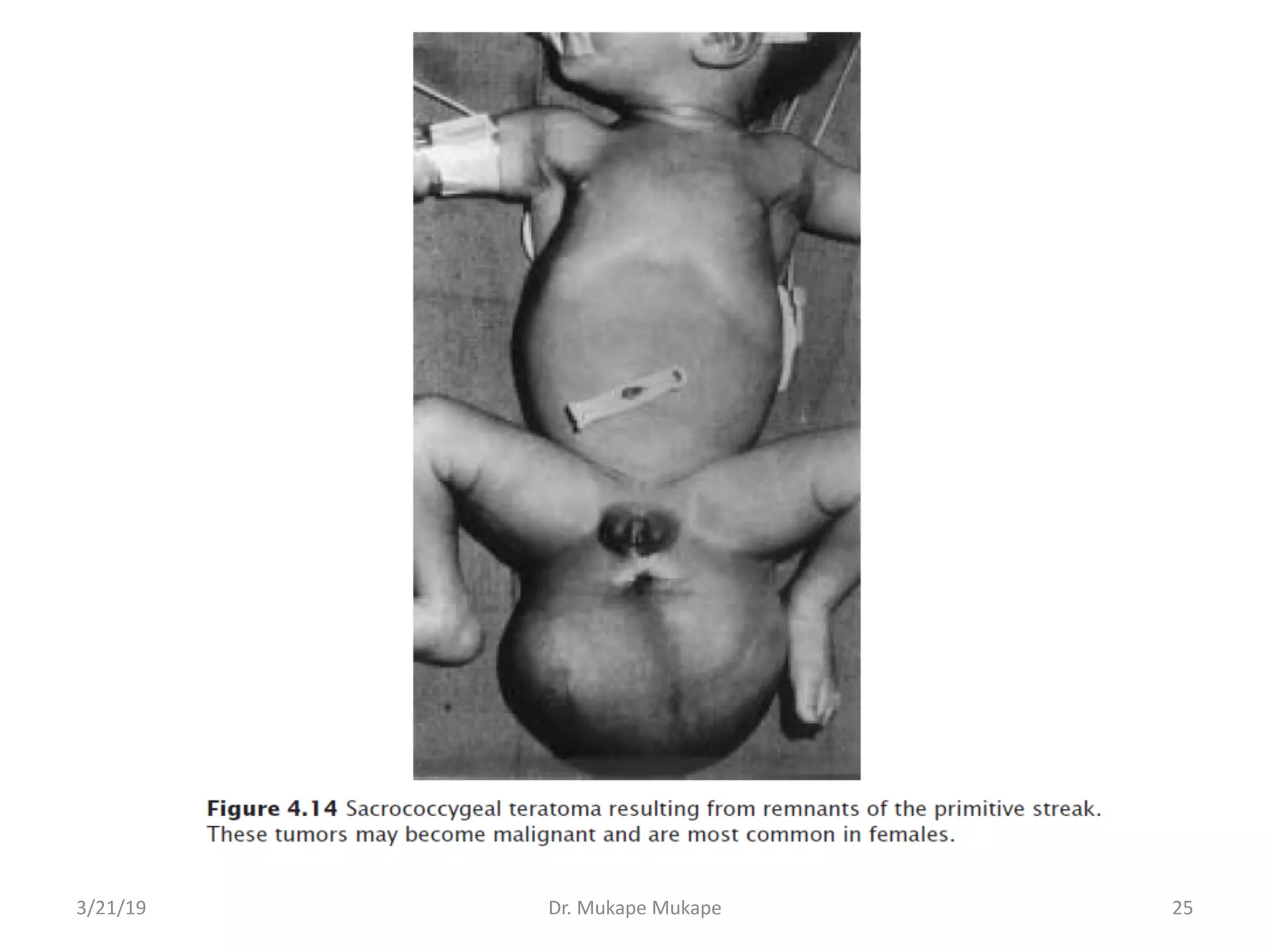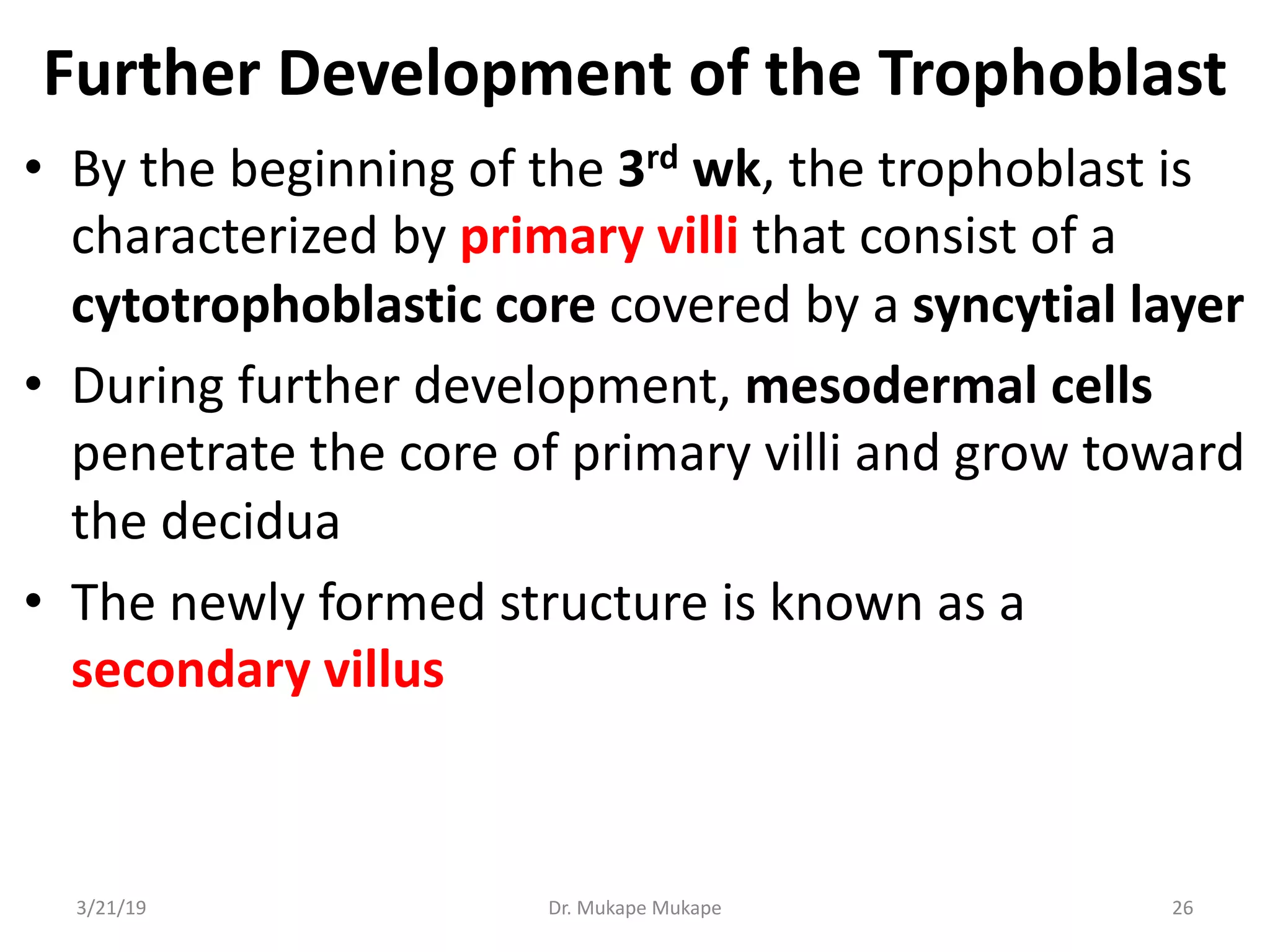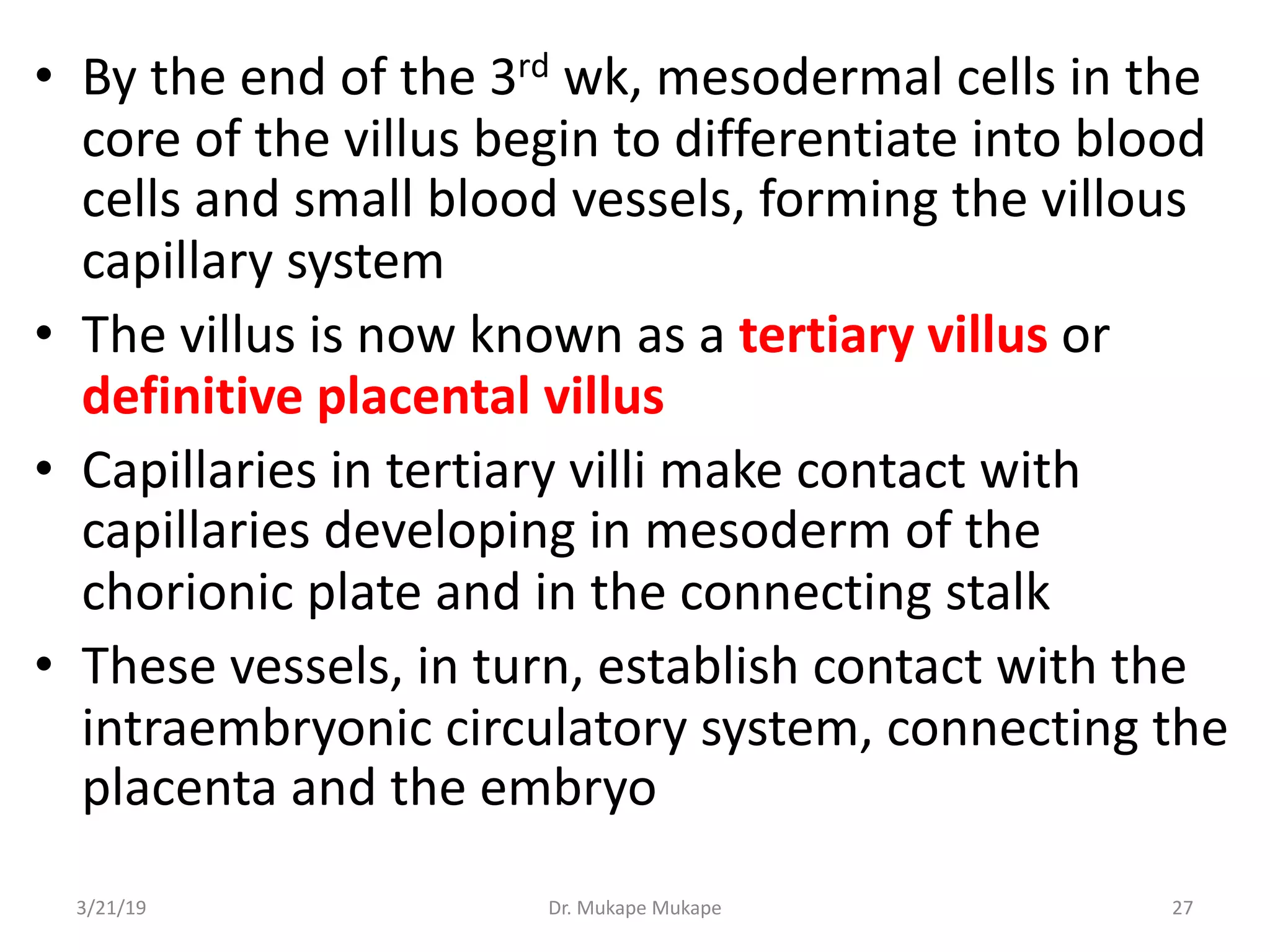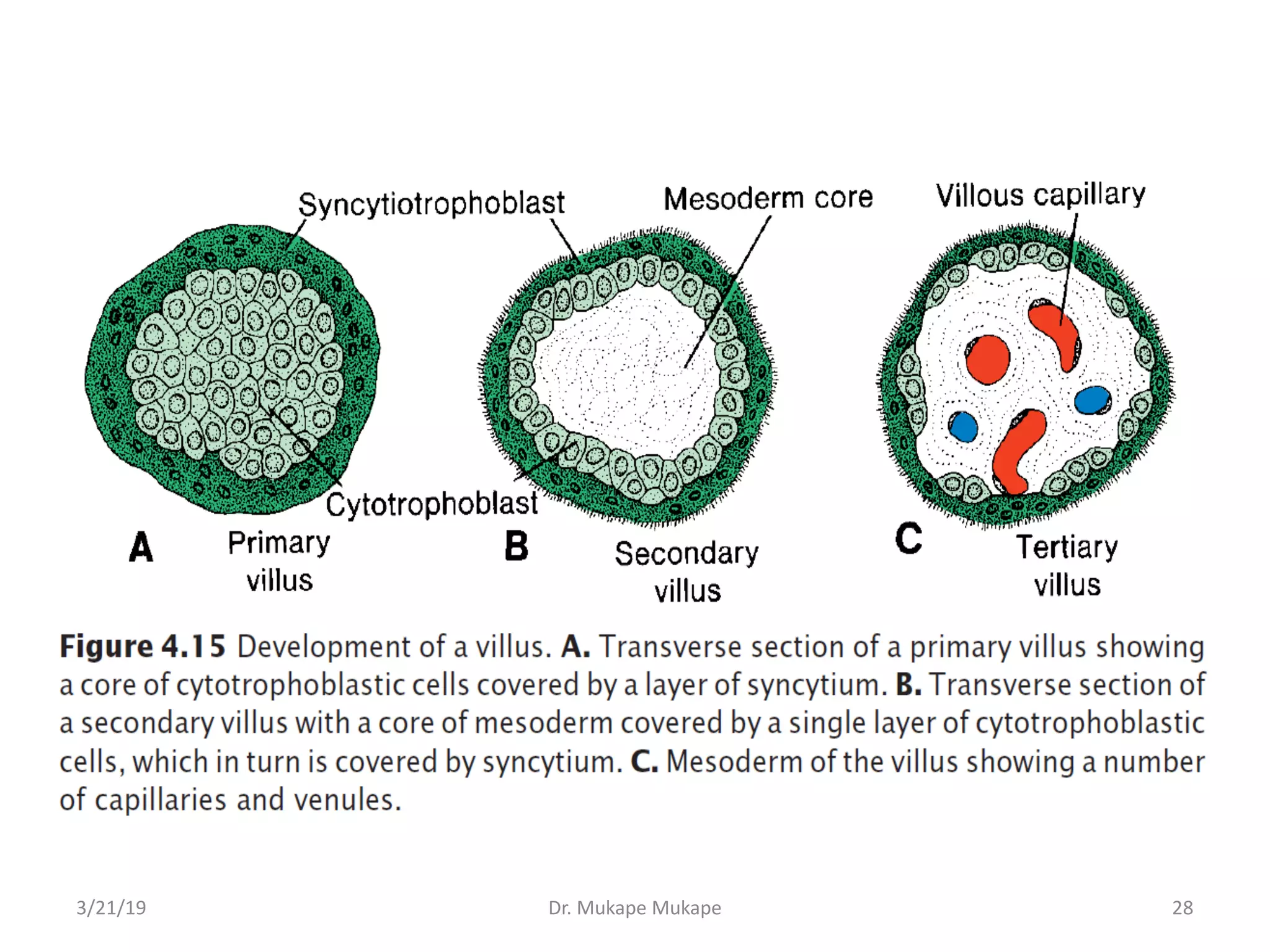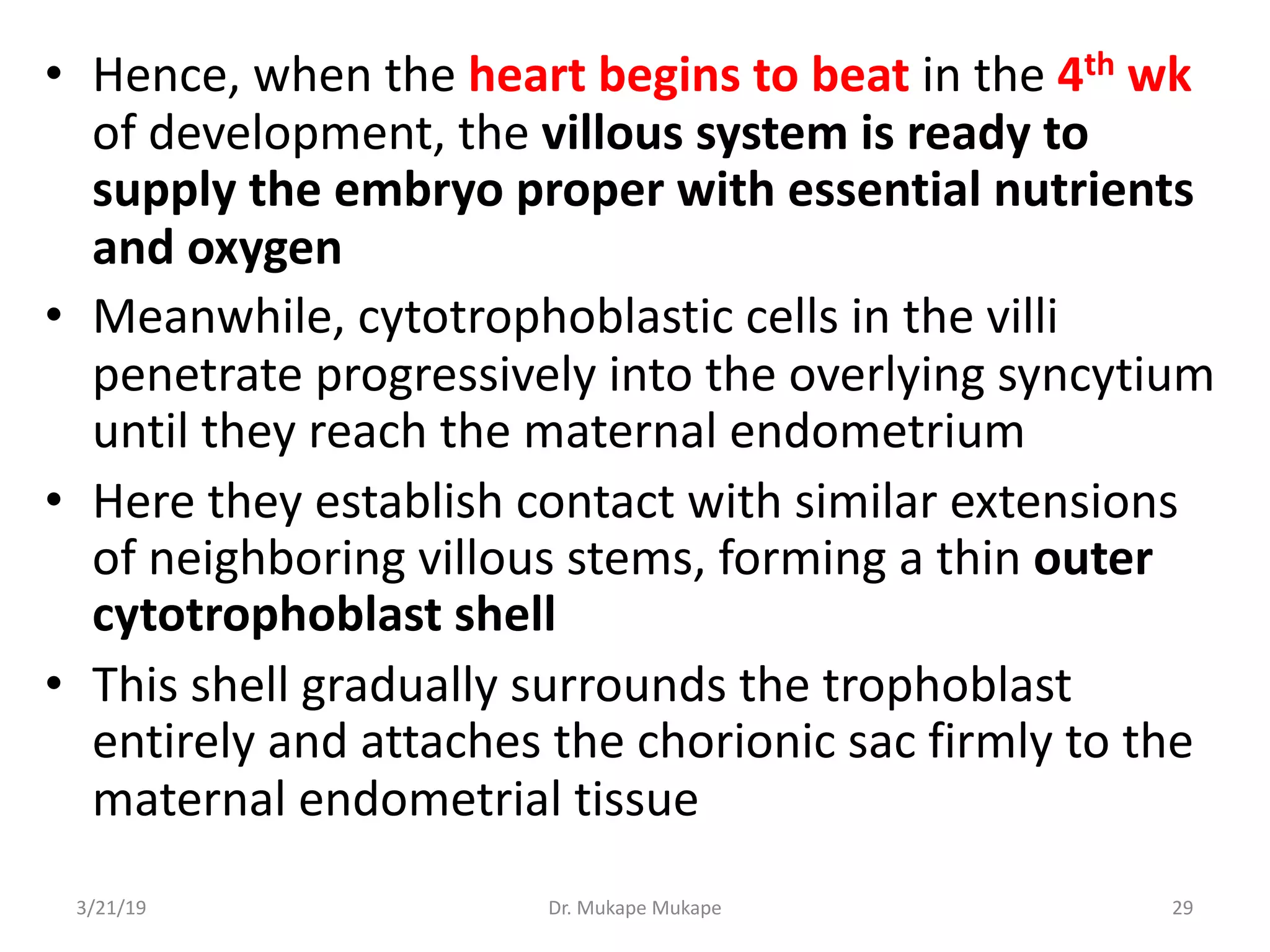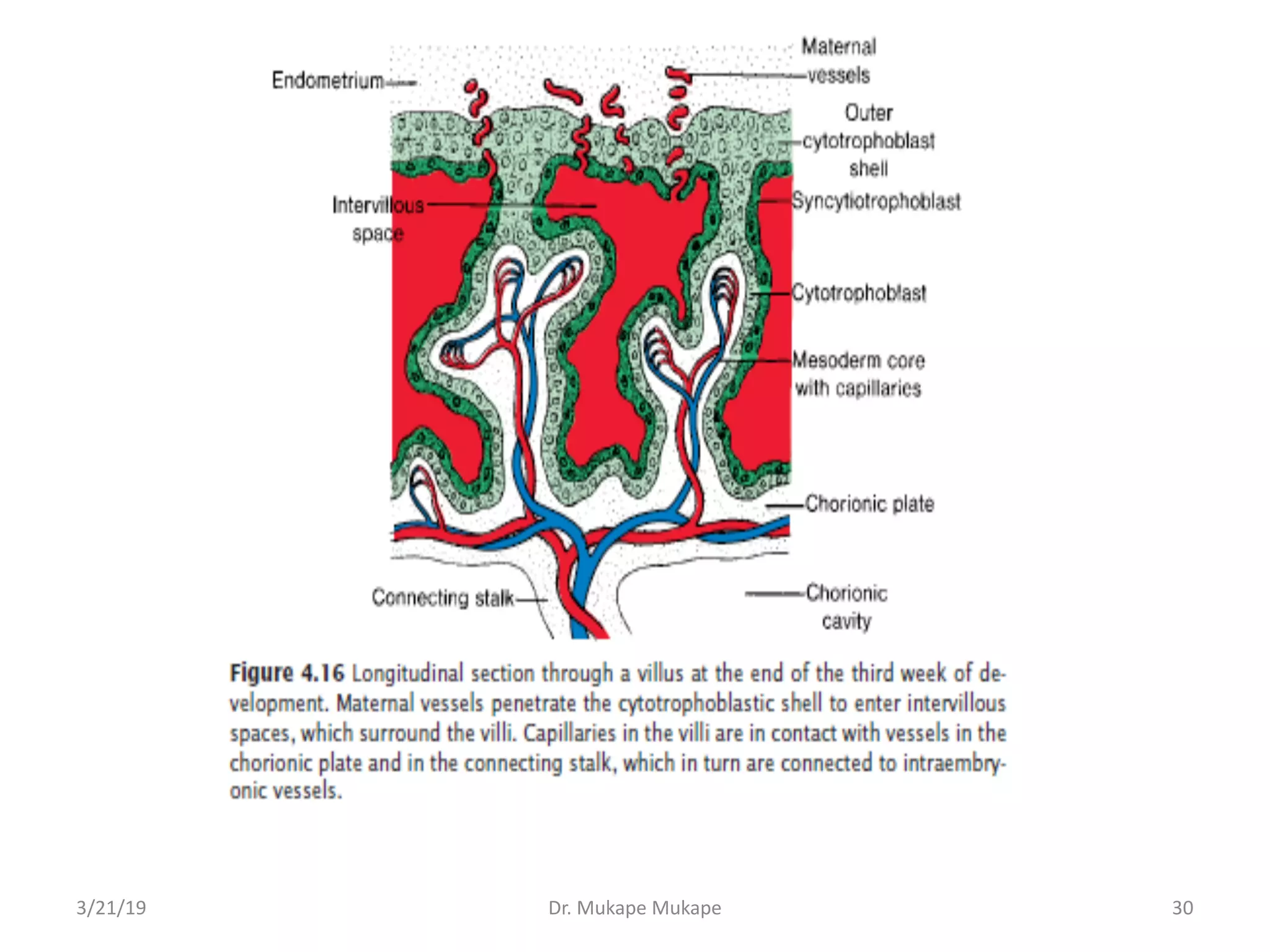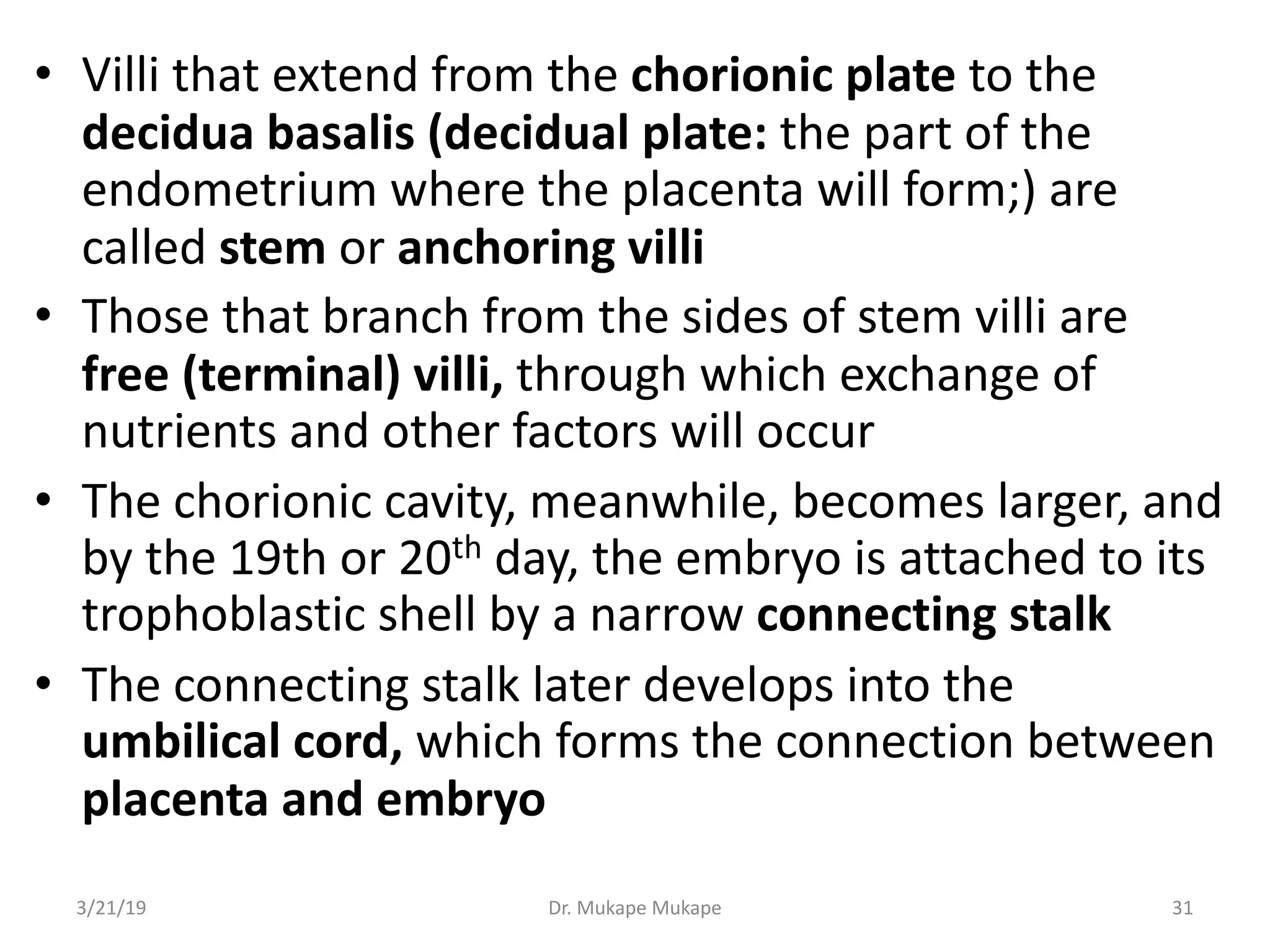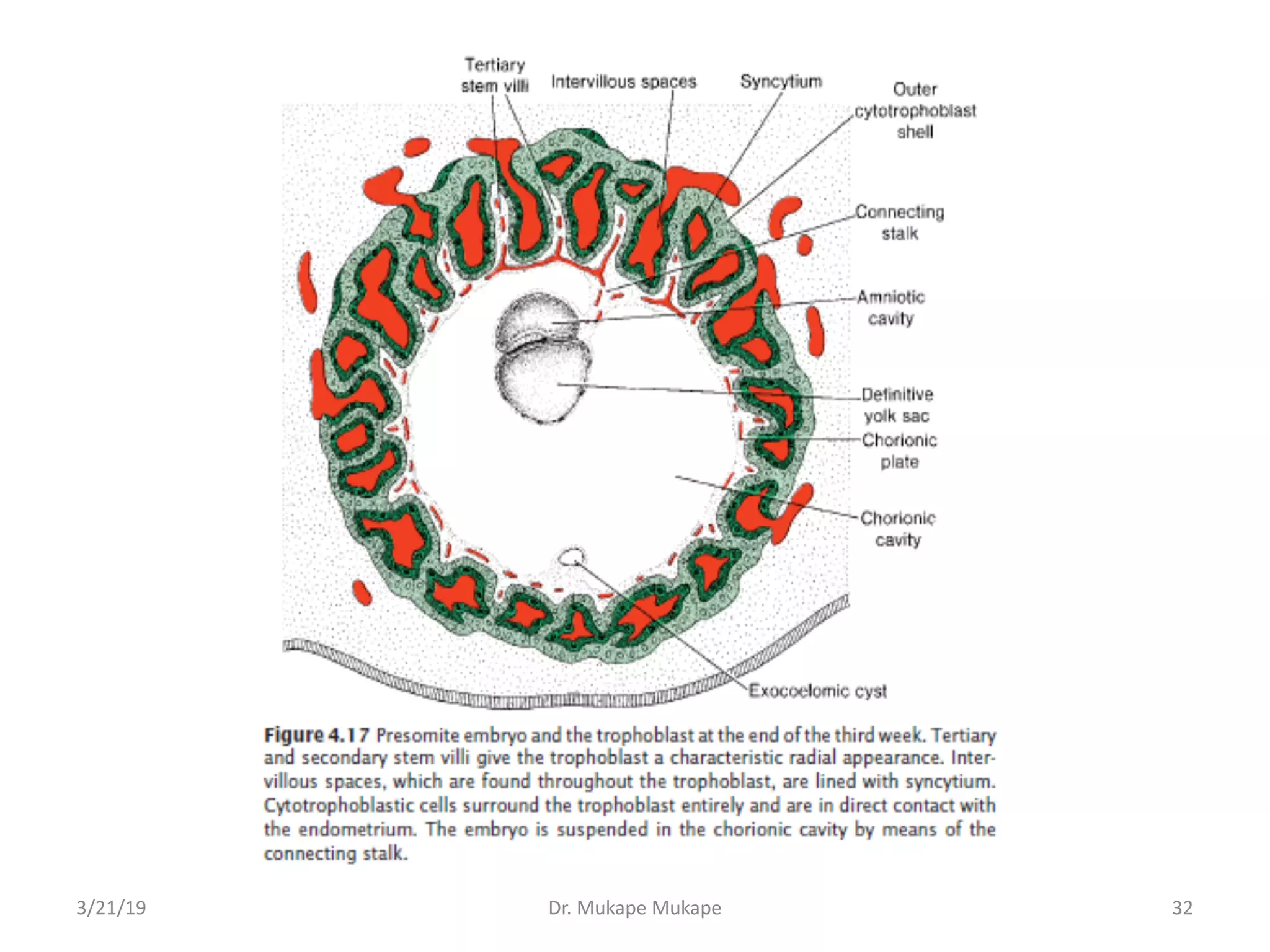During the third week of development, gastrulation establishes the three germ layers through the formation of the primitive streak on the epiblast surface. Cells migrate through the streak and invaginate to form the endoderm, mesoderm and ectoderm. The notochord also begins forming from prenotochordal cells that migrate through the primitive pit. By the end of the third week, the embryonic disc has elongated and the placenta has developed stem villi that will facilitate nutrient exchange with the maternal blood.
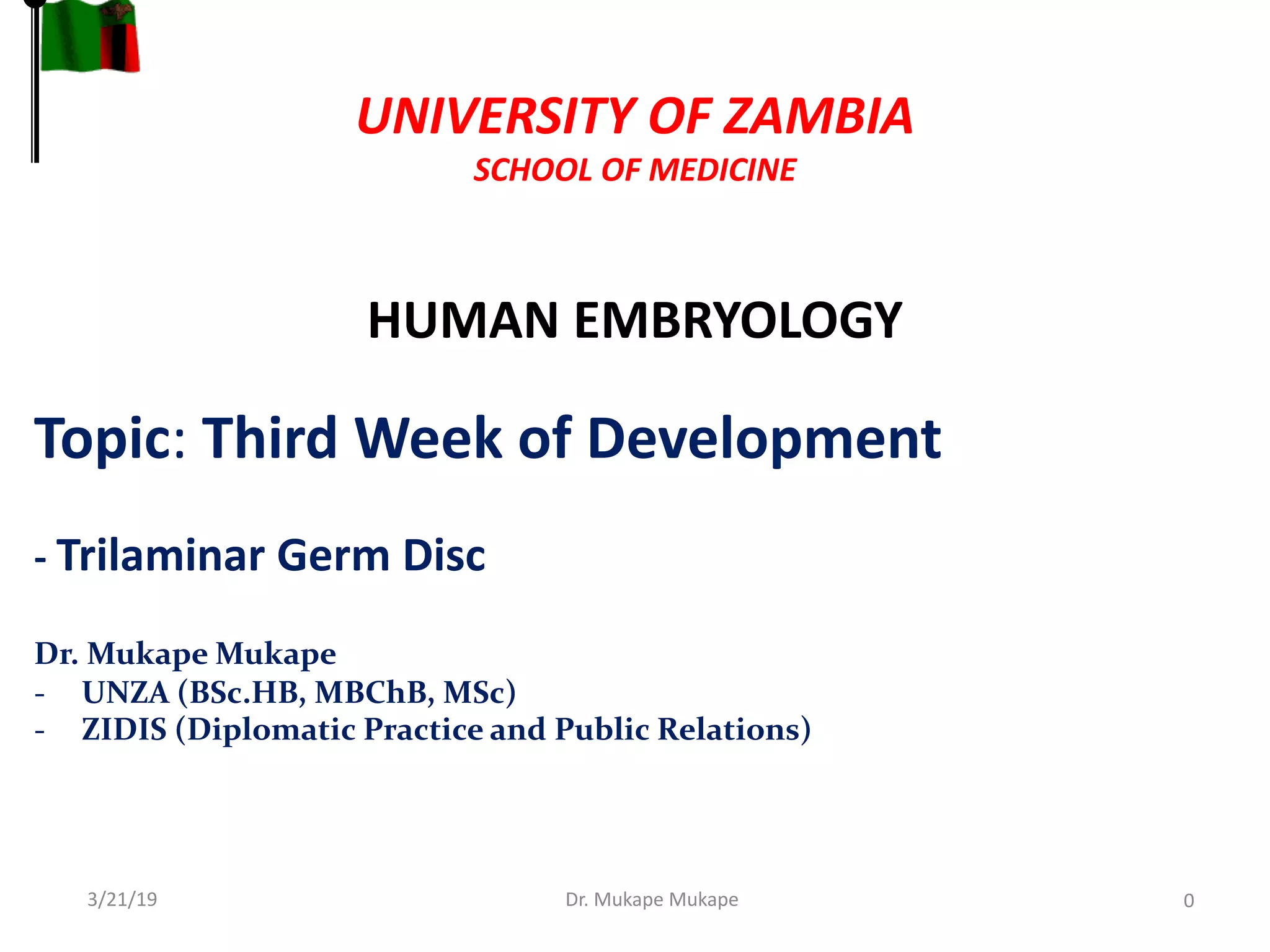
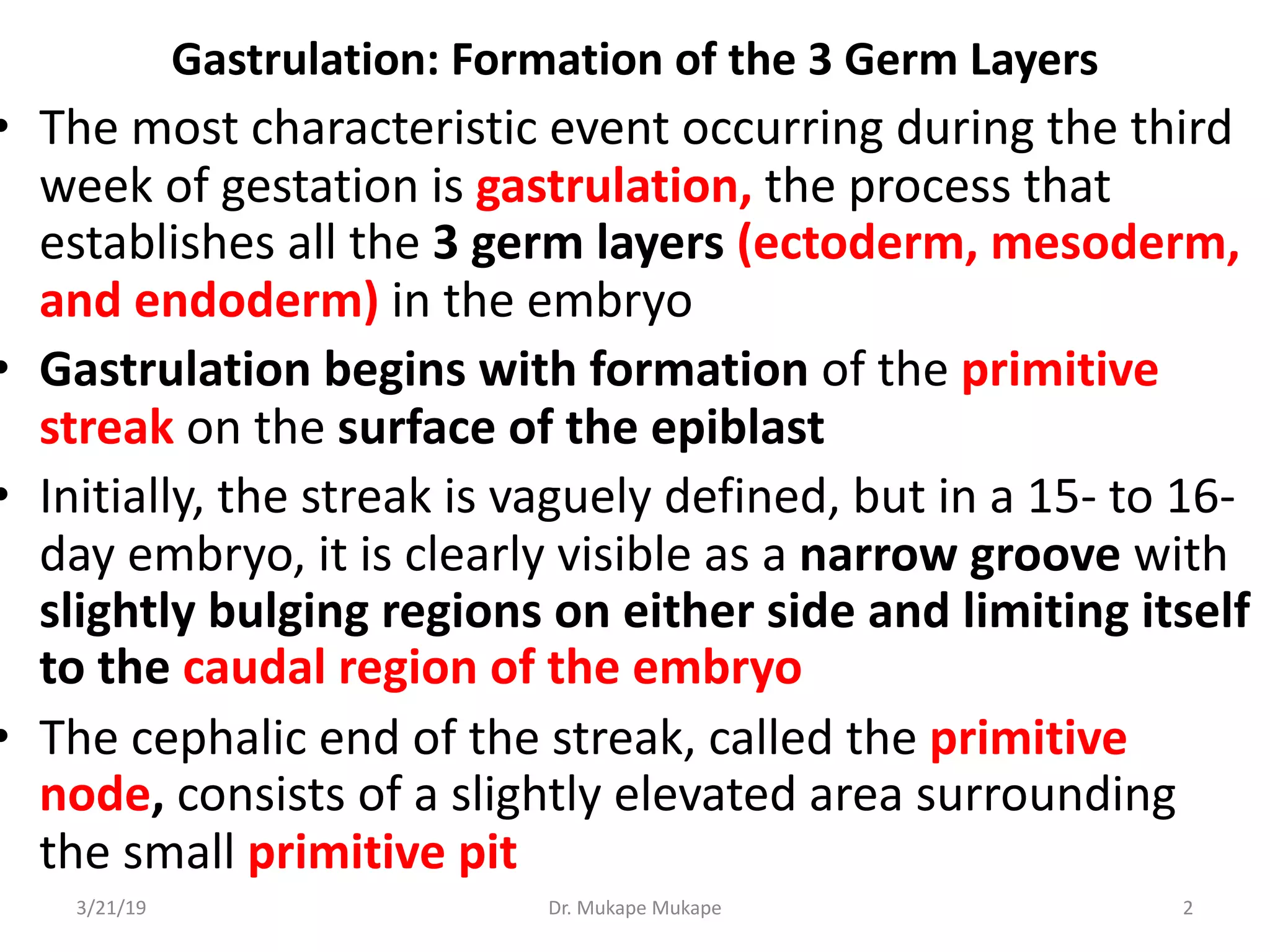
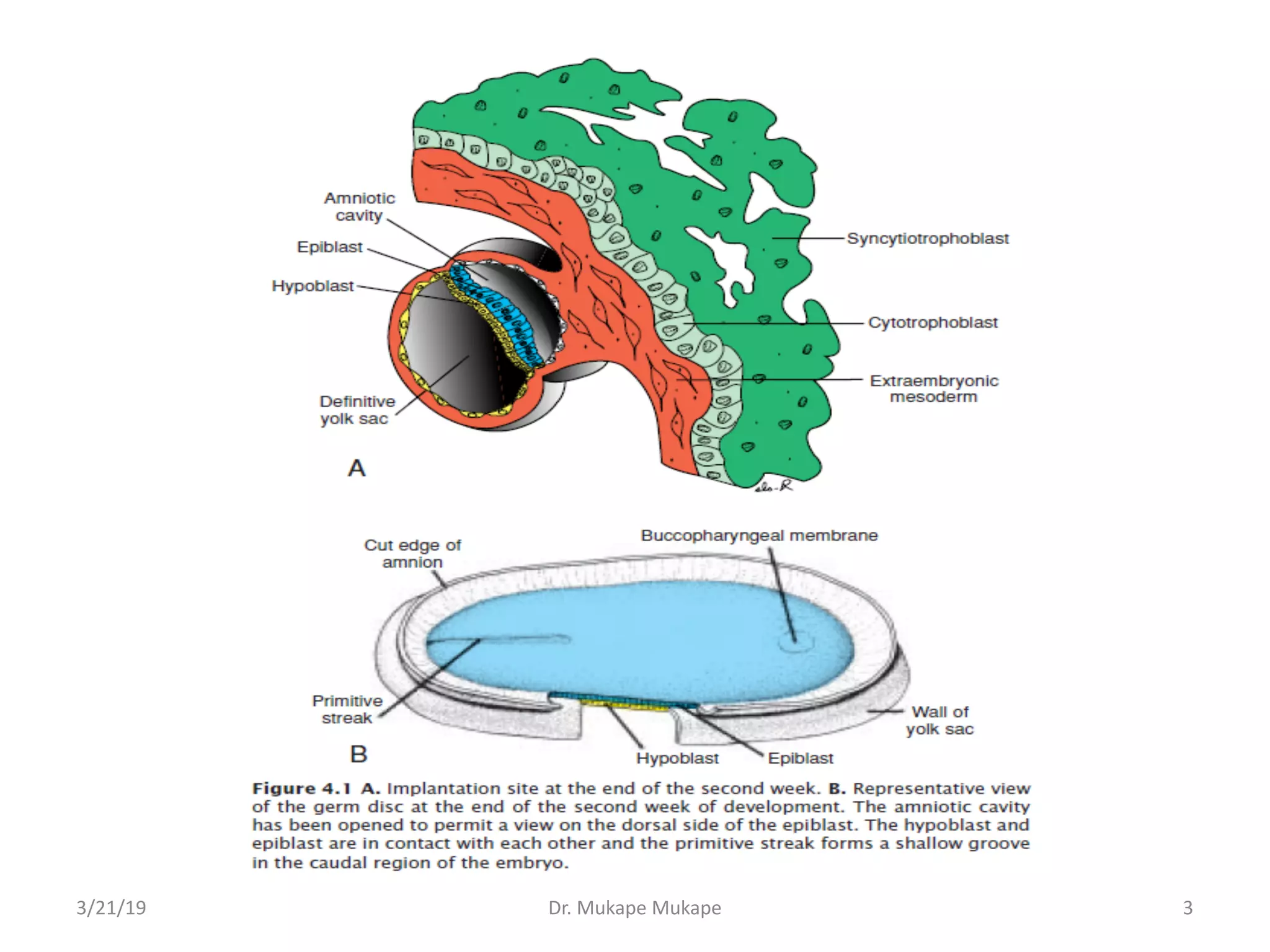
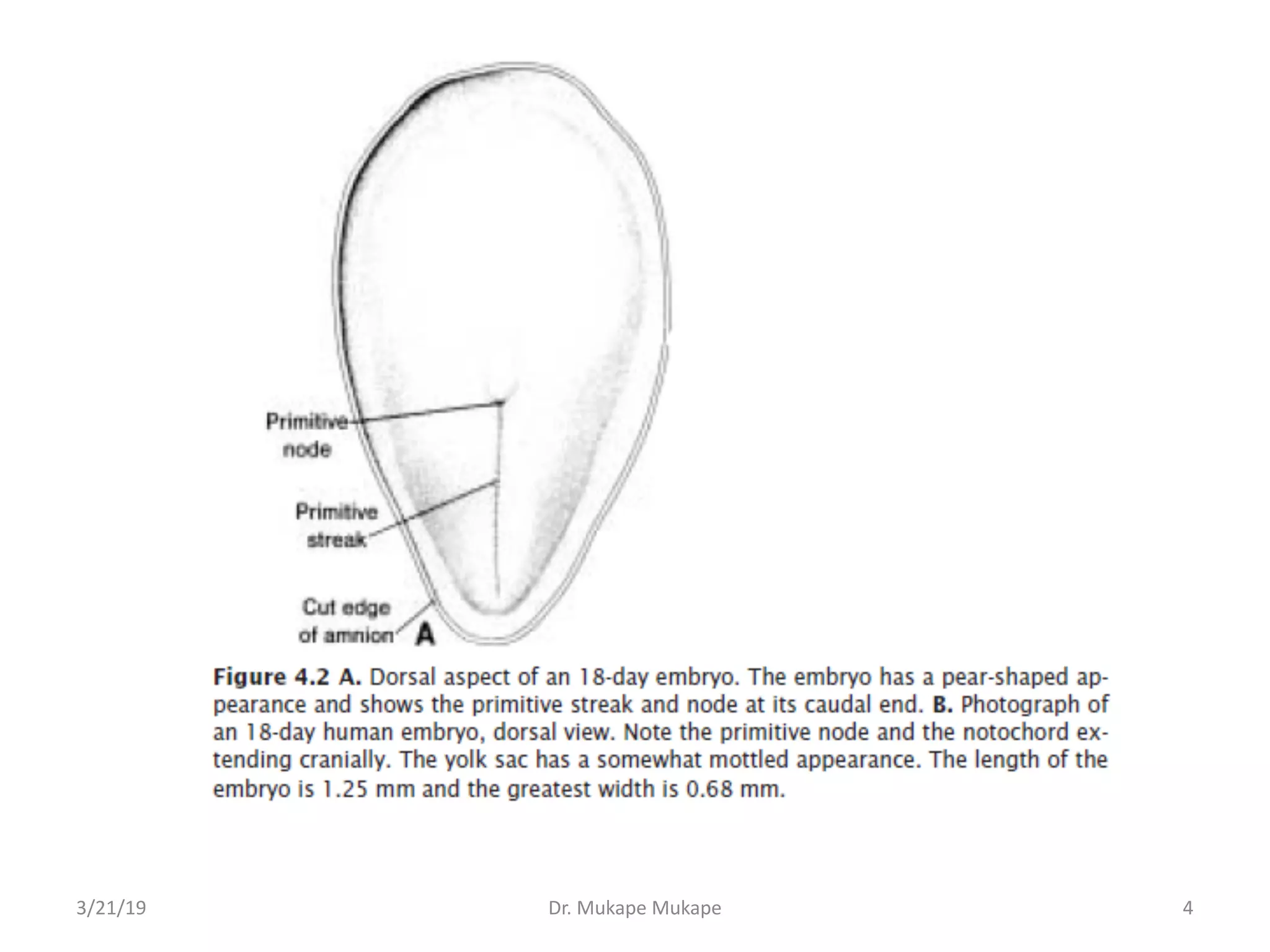
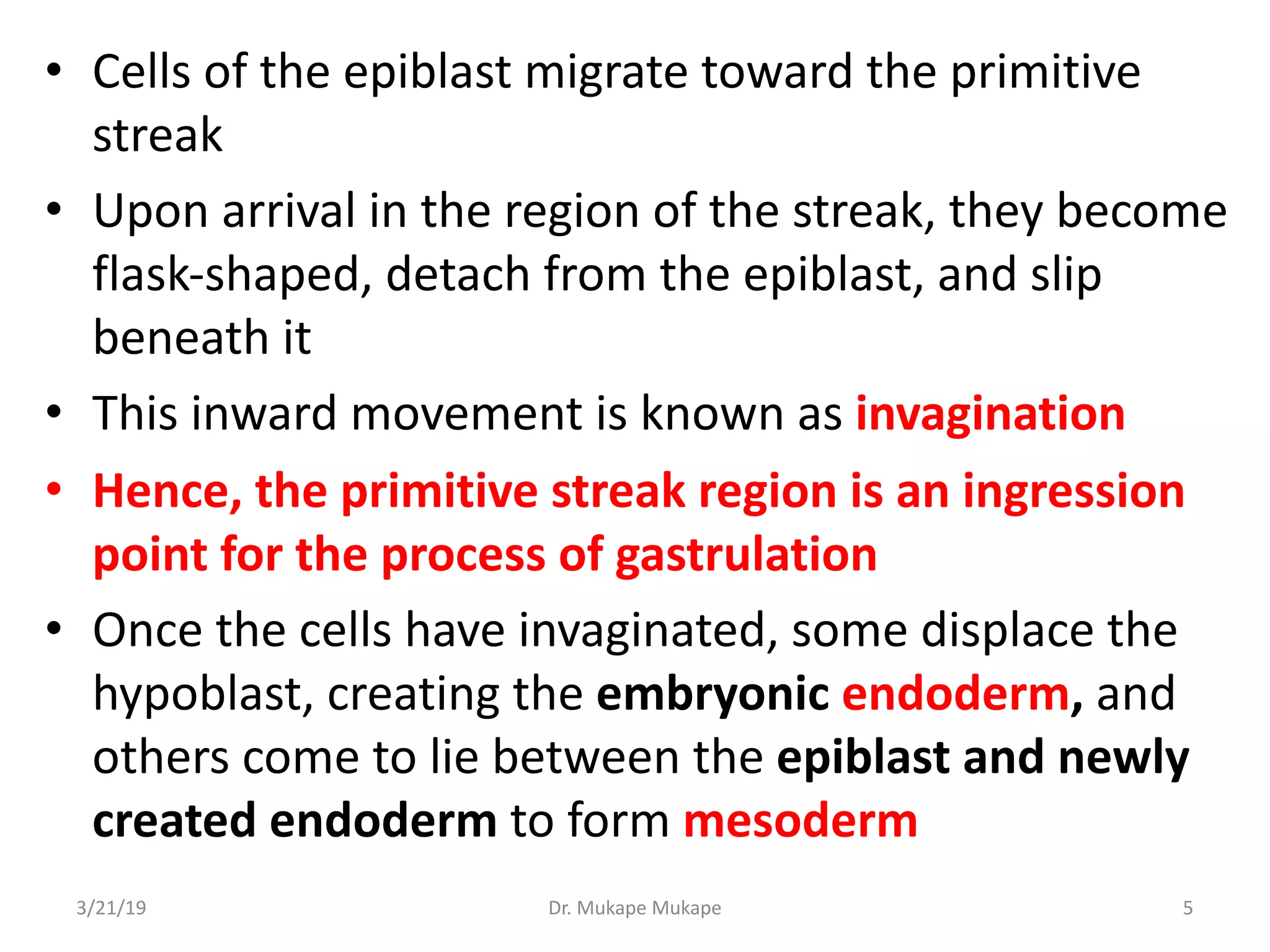

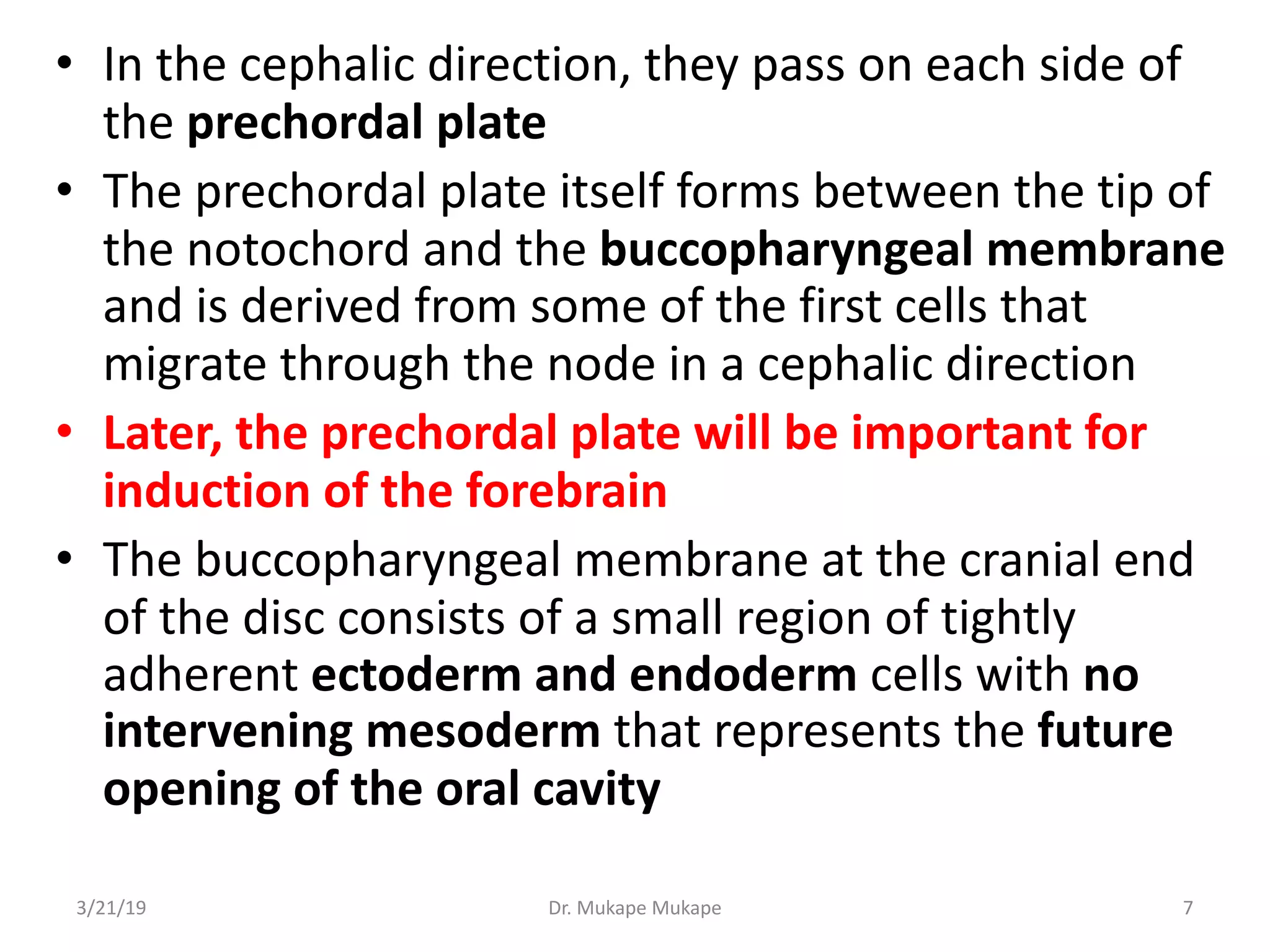
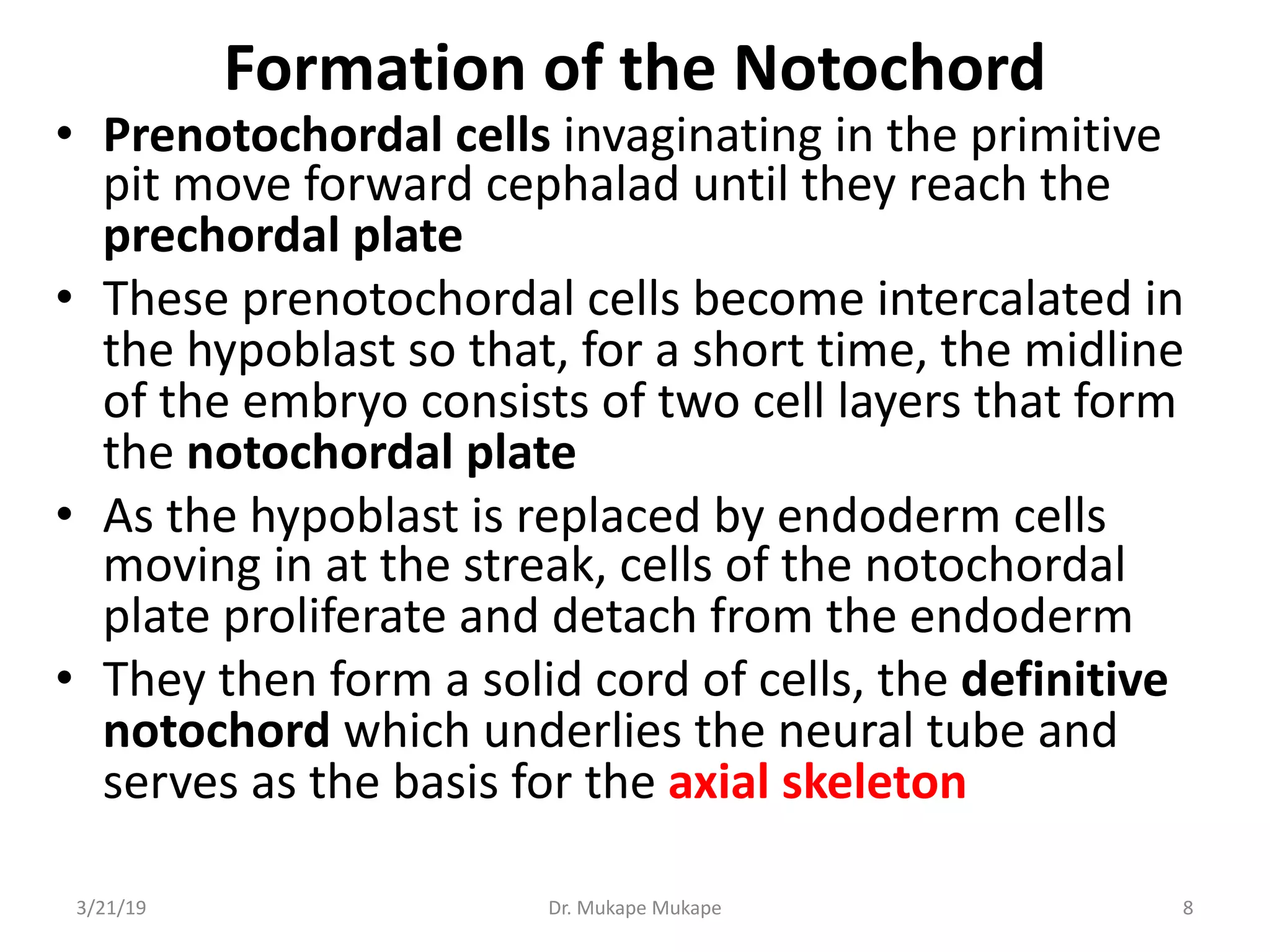
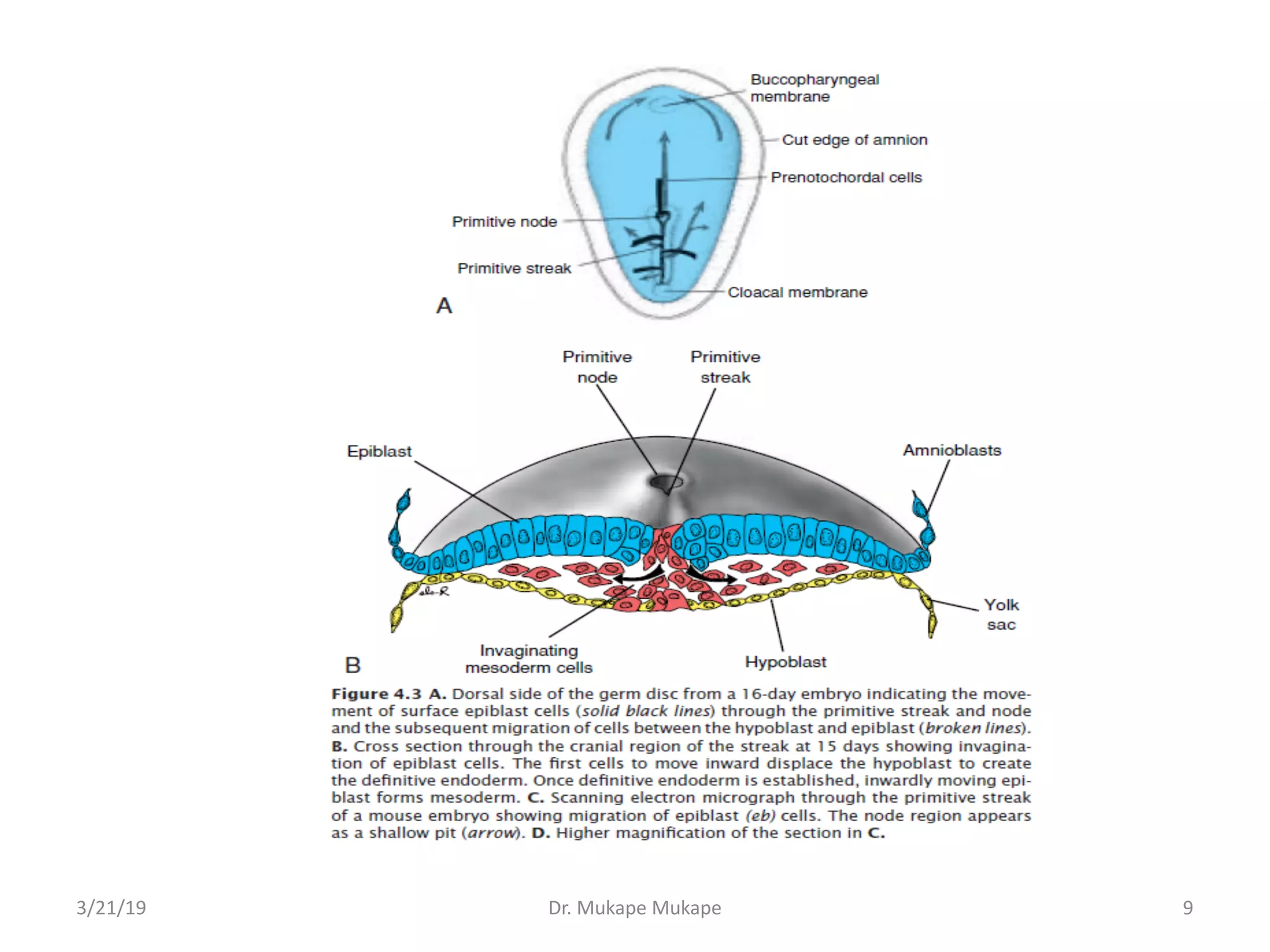
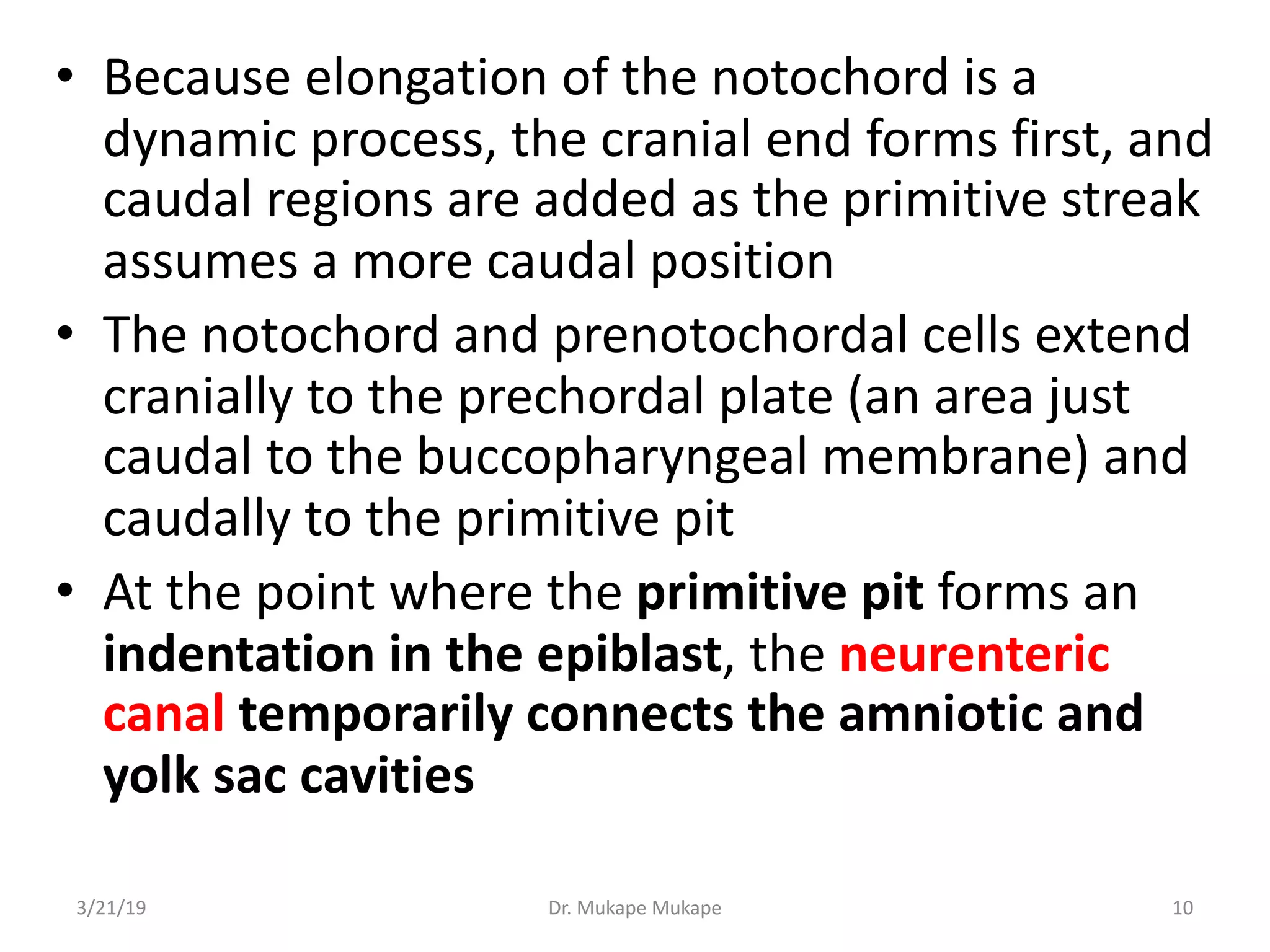
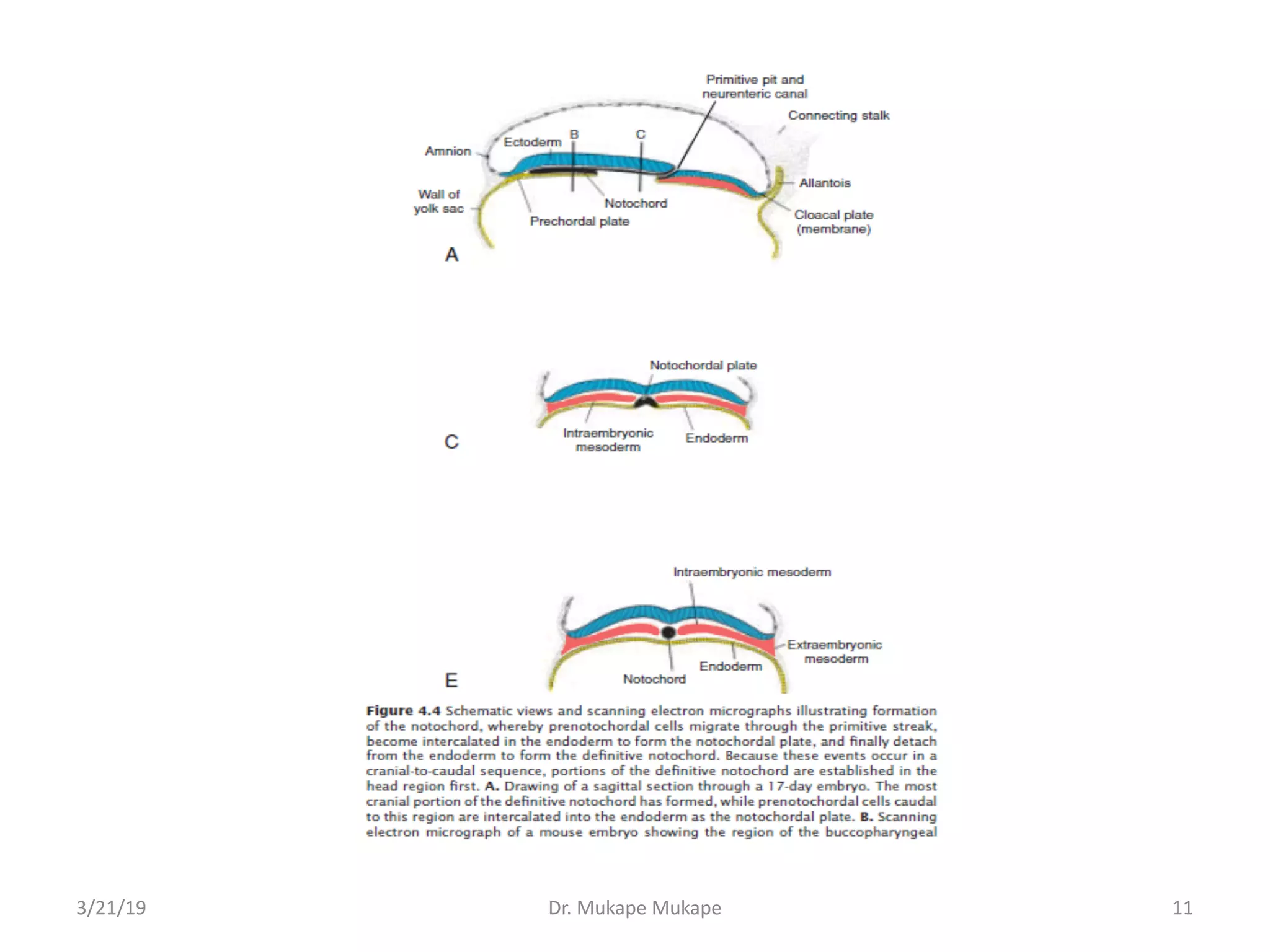
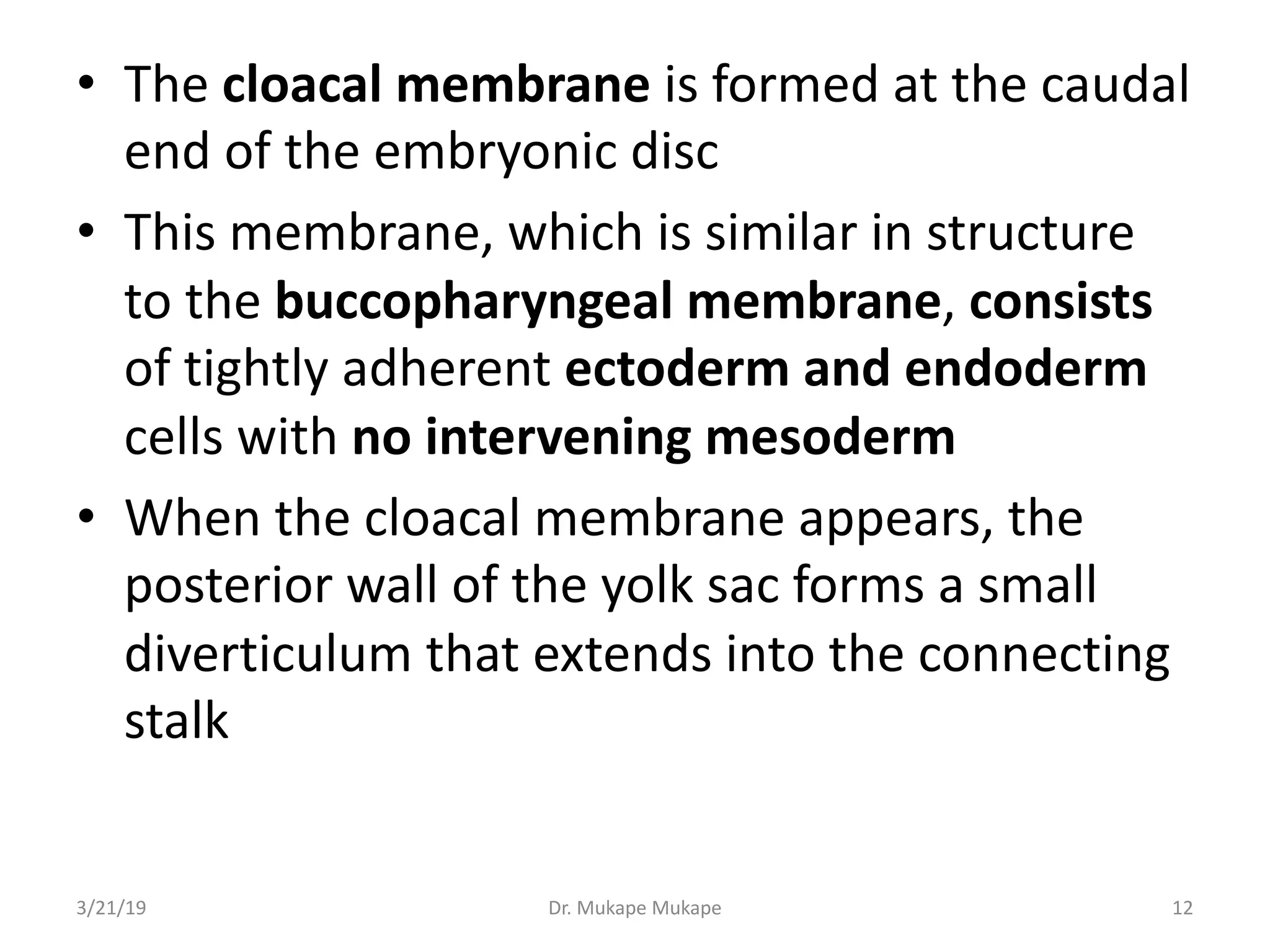
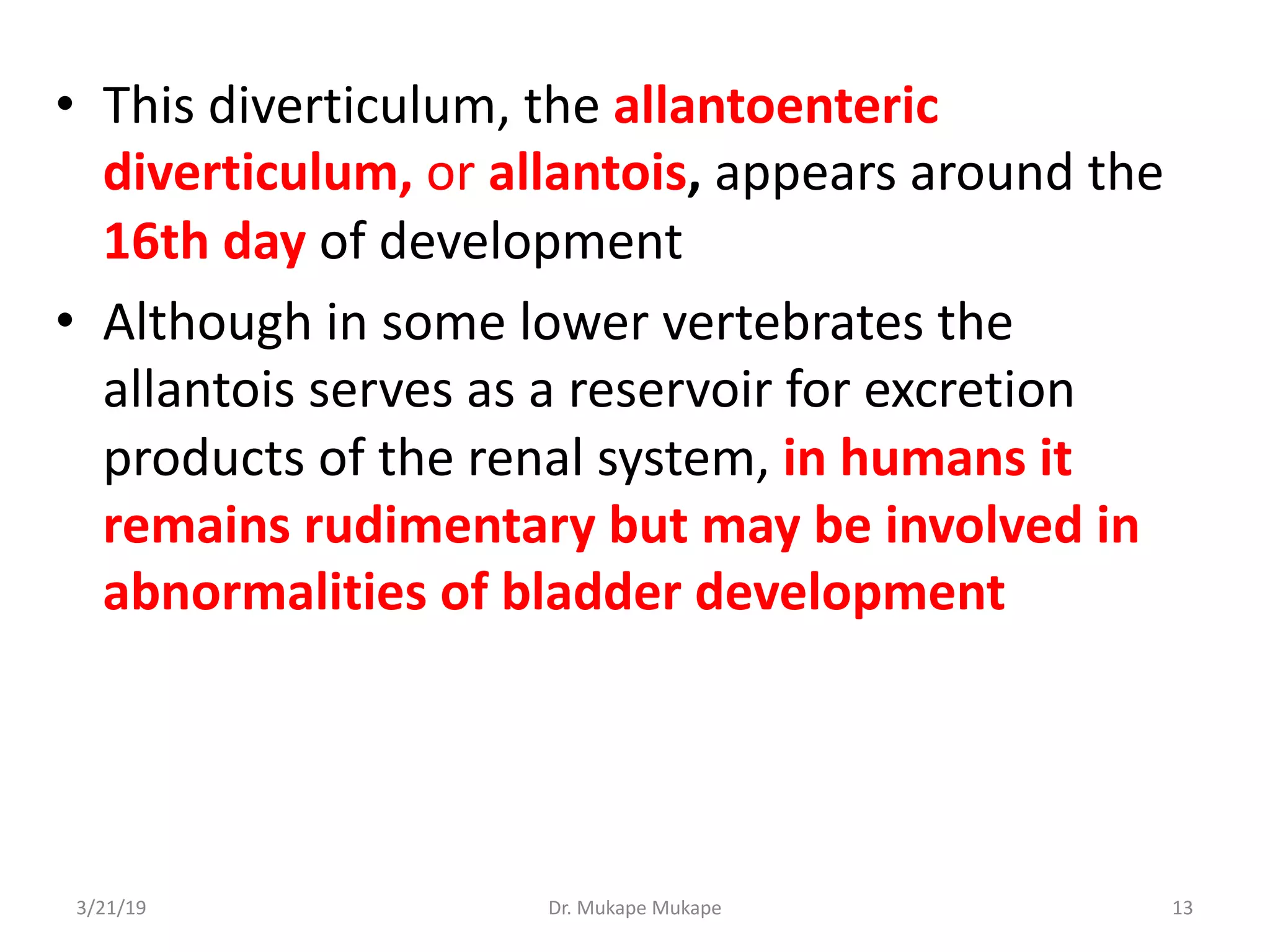
![Fate Map Established During Gastrulation
• Regions of the epiblast that migrate and ingress through
the primitive streak have been mapped and their ultimate
fates determined
- Cells that ingress through the cranial region of the node
become notochord
- Those migrating at the lateral edges of the node and from
the cranial end of the streak become paraxial mesoderm
- Cells migrating through the midstreak region become
intermediate mesoderm
- Those migrating through the more caudal part of the
streak form lateral plate mesoderm
- Cells migrating through the caudal-most part of the streak
contribute to extraembryonic mesoderm (the other
source of this tissue is the primitive yolk sac [hypoblast])
3/21/19 Dr. Mukape Mukape 14](https://image.slidesharecdn.com/19-230127185516-0c72c9b9/75/19-Third-Week-of-Development-pdf-14-2048.jpg)
